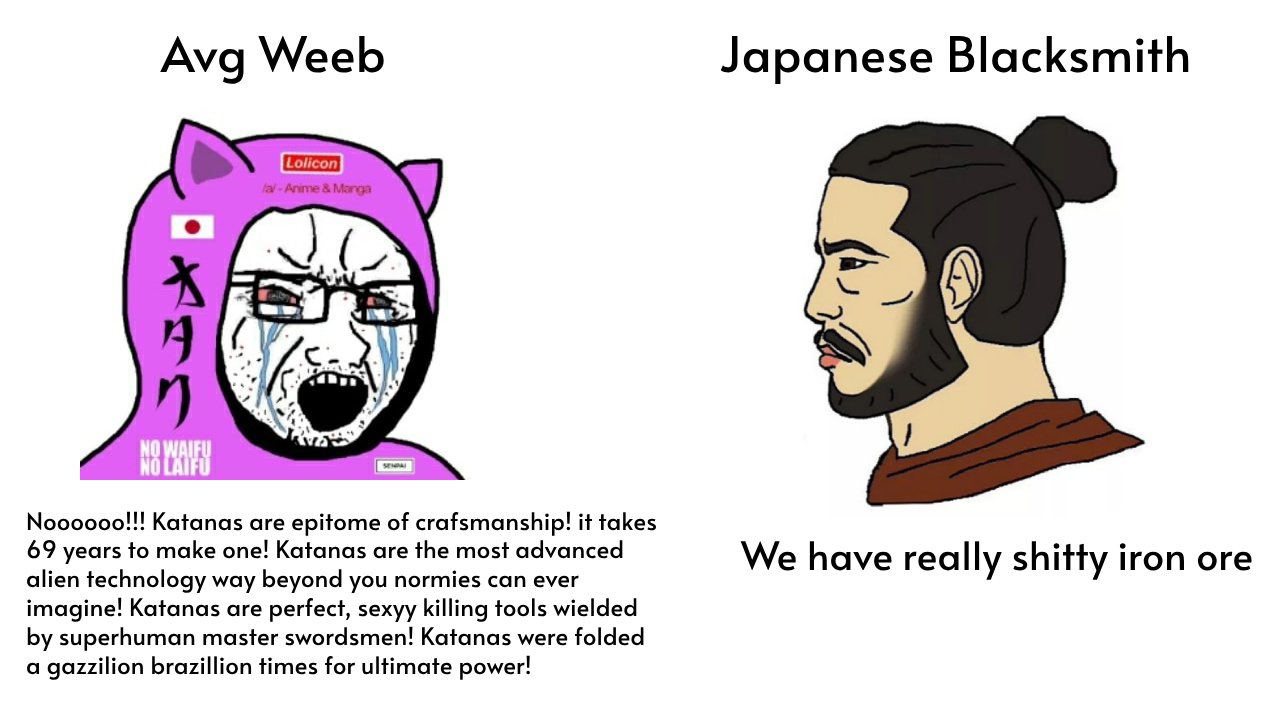this post was submitted on 09 Aug 2023
113 points (93.1% liked)
Anime
9808 readers
3 users here now
Anime is hand-drawn and computer animation originating from Japan.
Anime; the one thing that gets us closer to each other and brings us together.
 All spoilers must be tagged!
All spoilers must be tagged!
founded 5 years ago
MODERATORS
you are viewing a single comment's thread
view the rest of the comments
view the rest of the comments

Well, how does a professional sport player fare when they are given high quality equipment versus the low grade stuff they became a pro with?
In a melee battle, it doesn't really matter all that much the quality of a weapon if both are highly trained on how to use the weapon. A single mistake on either side could just as easily decide the battle one way or the other. I guess you could say whichever side won was just lucky the other side had an equipment malfunction, hesitated, or chose a bad tactic, etc.
Well yes obviously in a fight the better trained soldier is more likely to win. My question was more aimed at whether the the smithing techniques used for a katana would result in a noticeable difference if using the same materials.
You seem to be under the impression that having "higher quality steel" would somehow make a sword "better", that's not how it works. Japanese smiths usually had access to what's called Tamahagane steel, it historically had a low carbon content which made it softer than desirable, so they'd fold the steel to rid it of impurities and obtain a higher carbon content for the core of the blade, leaving the edge side softer to be sharpened. Having access to steel with a higher carbon content would only accomplish in the smithing process being more straight forward, with the end result being essentially the same.
The reality is that Katanas (and other Japanese blades) were already as good as they'd get and you can't really compare Japanese swords to European swords objectively because they were made with different purposes, in different contexts with different results in mind. For instance, a Katana is a single-edged sword with a slight curvature and a somewhat rounded tip, it was made for slashing and it did that really well, but a typical Arming Sword is a double-edged, straight blade with a very pointy end, it doesn't really slash as well, but can cut in both sides and the point can be used to pierce armor gaps in an adversary.
So you see, "steel quality" has a minimal baring when it comes to the actual usefulness of a weapon, what really matters is how it's used in combat given it's characteristics.